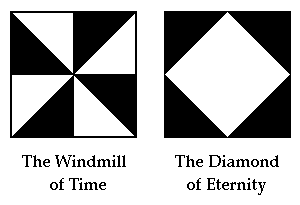The Black Virgin
of some divine eclipse,
As the black sun
of the Apocalypse,
As the black flower
that blessed Odysseus back
From witchcraft; and
he saw again the ships.
In all thy thousand images
we salute thee.
or standing on the moon
Crowned with the stars
or single, a morning star,
Sunlight and moonlight
are thy luminous shadows,
Starlight and twilight
thy refractions are,
Lights and half-lights and
all lights turn about thee.
date of death of Deborah Kerr:
"Harish, who was
of a
spiritual, even religious, cast
and who liked to express himself in
metaphors, vivid and
compelling,
did see, I believe, mathematics
as mediating between man
and
what one can only
call God."
-- R. P. Langlands
From a link of Jan. 17, 2008--
Time and Eternity:


Jean Simmons (l.) and Deborah Kerr (r.)
in "Black Narcissus" (1947)
and from the next day,
Jan. 18, 2008:
... Todo lo sé por el lucero puro
que brilla en la diadema de la Muerte.
-- Rubén Darío,
born January 18, 1867
Related material:
Dark Lady and Bright Star,
Time and Eternity,
Damnation Morning
Happy birthday also to
the late John O'Hara.



Recent Comments